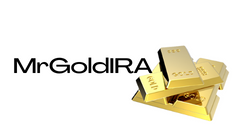
The price of an ounce of pure gold is nearing its highest historical level, reaching $2,071 per ounce over the weekend. This surge is reminiscent of its record three years ago during the Covid-19 pandemic when spot gold prices soared to an unprecedented high of $2,072.50 per ounce on August 7, 2020.
Gold's Potential Breakthrough to Lifetime Price High Amid Economic Unrest
With U.S. equities ending on a positive note last Friday and a surge in the value of the crypto economy, the cost of a single ounce of gold is on the brink of surpassing its historical peak. Currently, gold is trading at $2,071.88 per ounce, just slightly below its all-time high set on August 7, 2020, by a fractional 0.029%.
Back in 2020, when the Covid-19 pandemic created uncertainty and led to lockdowns, concerns about the future of the economy grew. On August 7 of that year, gold reached its peak for the day, hitting $2,072.50 per ounce.
Gold Prices Reflect Global Uncertainty and Draw Investors
Today, as the global economy grapples with ongoing uncertainty, gold prices mirror these concerns and attract investors to this traditional safe-haven asset. While the intensity of the Covid-19 crisis has diminished, China is currently dealing with a surge in mysterious respiratory diseases, including mycoplasma pneumonia, leading the World Health Organization (WHO) to request more details about the outbreak. Additionally, international tensions, such as the conflicts between Russia and Ukraine and between Israel and Hamas, have heightened global economic uncertainty, further enhancing the appeal of gold as a valuable asset.
In the U.S., the Federal Reserve's strategy of increasing interest rates to tackle inflation has resulted in higher interest rates and market volatility, heightening fears of a recession. Furthermore, yield curve metrics, particularly the comparison between the 10-year and 3-month Treasury rates, which traditionally forecast recessions accurately, suggest a substantial likelihood of a recession occurring within the next year.
Factors Driving Gold Prices
A combination of unpredictable events, geopolitical unrest, and global economic slowdowns have propelled gold prices to their current levels. The demand for gold from central banks globally has also played a significant role in supporting this surge. While gold has seen a 1.73% increase in the last 24 hours, silver has not yet reached its historical peak and has only experienced a modest 0.65% rise during the same period.
Presently, silver's price remains significantly lower than its high of $49 per ounce on April 25, 2011. To surpass its previous peak, silver would need to witness a 92% increase. Technical analyst Gary Wagner opines that the "rally in gold and silver is far from over." Wagner acknowledges that the present economic conditions will favor both metals, but he predicts that "gold will continue to gain value at a much greater pace than silver."

What are your thoughts on the rise in gold's price? Share your opinions in the comments section below.
Frequently Asked Questions
Who holds the gold in a gold IRA?
The IRS considers gold owned by an individual to be “a type of money” and is subject taxation.
This tax-free status is only available to those who have owned at least $10,000 of gold and have kept it for at minimum five years.
While gold may be a great investment to help prevent inflation and volatility in the market, it's not wise to keep it if you won't use it.
If you are planning to sell your gold someday, it is necessary that you report its value. This can affect the capital gains taxes that you owe when cashing in on investments.
You should consult a financial planner or accountant to see what options are available to you.
What amount should I invest in my Roth IRA?
Roth IRAs are retirement accounts where you deposit your own money tax-free. These accounts cannot be withdrawn until you turn 59 1/2. However, if you do decide to take out some of your contributions before then, there are specific rules you must follow. You cannot touch your principal (the amount you originally deposited). No matter how much money you contribute, you cannot take out more than was originally deposited to the account. If you are able to take out more that what you have initially contributed, you must pay taxes.
The second rule says that you cannot withdraw your earnings without paying income tax. When you withdraw, you will have to pay income tax. Consider, for instance, that you contribute $5,000 per year to your Roth IRA. Let's further assume you earn $10,000 annually after contributing. On the earnings, you would be responsible for $3,500 federal income taxes. This leaves you with $6,500 remaining. Since you're limited to taking out only what you initially contributed, that's all you could take out.
So, if you were to take out $4,000 of your earnings, you'd still owe taxes on the remaining $1,500. In addition, 50% of your earnings will be subject to tax again (half of 40%). Even though you had $7,000 in your Roth IRA account, you only received $4,000.
There are two types if Roth IRAs: Roth and Traditional. Traditional IRAs allow for pre-tax deductions from your taxable earnings. When you retire, you can use your traditional IRA to withdraw your contribution balance plus interest. There is no limit on how much you can withdraw from a traditional IRA.
Roth IRAs do not allow you to deduct your contributions. After you have retired, the full amount of your contributions and accrued interest can be withdrawn. There is no minimum withdrawal limit, unlike traditional IRAs. You don't need to wait until your 70 1/2 year old age before you can withdraw your contribution.
What are the benefits of a Gold IRA?
An Individual Retirement Account (IRA) is the best way to put money towards retirement. It's not subject to tax until you withdraw it. You have total control over how much each year you take out. There are many types available. Some are better suited for people who want to save for college expenses. Others are designed for investors looking for higher returns. Roth IRAs let individuals contribute after age 591/2 and pay tax on any earnings at retirement. These earnings don't get taxed if they withdraw funds. This type of account might be a good choice if your goal is to retire early.
The gold IRA allows you to invest in different asset classes, which is similar to other IRAs. Unlike a regular IRA which requires taxes to be paid on gains as you wait to withdraw them, a IRA with gold allows you to invest in multiple asset classes. For people who would rather invest than spend their money, gold IRA accounts are a good option.
Another benefit to owning IRA gold is the ability to withdraw automatically. This means that you don't need to worry about making monthly deposits. To ensure that you never miss a payment, you could set up direct debits.
Finally, gold is one of the safest investment choices available today. Its value is stable because it's not tied with any one country. Even in economic turmoil, gold prices tends to remain relatively stable. As a result, it's often considered a good choice when protecting your savings from inflation.
Can I own a gold ETF inside a Roth IRA
While a 401k may not offer this option for you, it is worth considering other options, such an Individual Retirement Plan (IRA).
A traditional IRA allows for contributions from both employer and employee. Another option is to invest in publicly traded corporations with an Employee Stockownership Plan (ESOP).
An ESOP gives employees tax advantages as they share the stock of the company and the profits it makes. The money invested in ESOPs is taxed at a lower rate that if it were owned directly by an employee.
A Individual Retirement Annuity is also possible. An IRA allows for you to make regular income payments during your life. Contributions to IRAs do not have to be taxable
Is buying gold a good retirement plan?
Although it may not look appealing at first, buying gold for investment is worth considering when you consider the global average gold consumption per year.
Physical bullion bar is the best way to invest in precious metals. You can also invest in gold in other ways. It's best to thoroughly research all options before you make a decision.
If you're not looking to secure your wealth, it may be worth considering purchasing shares in mining equipment or companies that extract gold. If you need cash flow to finance your investment, then gold stocks could be a good option.
ETFs are an exchange-traded investment that allows you to gain exposure to the market for gold. You hold gold-related securities and not actual gold. These ETFs often include stocks of gold miners, precious metals refiners, and commodity trading companies.
How much should your IRA include precious metals
It's important to understand that precious metals aren't only for wealthy people. You don't need to be rich to make an investment in precious metals. You can actually make money without spending a lot on gold or silver investments.
You might also be interested in buying physical coins, such bullion rounds or bars. Also, you could buy shares in companies producing precious metals. You may also be interested in an IRA transfer program offered by your retirement provider.
You can still get benefits from precious metals regardless of what choice you make. They offer the potential for long-term, sustainable growth even though they aren’t stocks.
And unlike traditional investments, they tend to increase in value over time. If you decide to sell your investment, you will likely make more than with traditional investments.
Statistics
- The price of gold jumped 131 percent from late 2007 to September 2011, when it hit a high of $1,921 an ounce, according to the World Gold Council. (aarp.org)
- Indeed, several financial advisers interviewed for this article suggest you invest 5 to 15 percent of your portfolio in gold, just in case. (aarp.org)
- Instead, the economy improved, stocks rebounded, and gold plunged, losing 28 percent of its value in 2013. (aarp.org)
- This is a 15% margin that has shown no stable direction of growth but fluctuates seemingly at random. (smartasset.com)
- If you take distributions before hitting 59.5, you'll owe a 10% penalty on the amount withdrawn. (lendedu.com)
External Links
irs.gov
investopedia.com
law.cornell.edu
- 7 U.S. Code SS7 – Designation of boards for trade as contract markets
- 26 U.S. Code SS 408 – Individual retirement account
wsj.com
- Saddam Hussein's InvasionHelped Uncage a Bear in 1990 – WSJ
- Are you interested in keeping gold in your IRA at-home? It's Not Exactly Legal – WSJ
How To
How to Keep Physical Gold in an IRA
An easy way to invest gold is to buy shares from gold-producing companies. However, this method comes with many risks because there's no guarantee that these companies will continue to survive. If they survive, there's still the risk of losing money due to fluctuations in the price of gold.
You can also buy gold directly. You can either open an account with a bank, online bullion dealer, or buy gold directly from a seller you trust. This option is convenient because you can access your gold when it's low and doesn't require you to deal with stock brokers. It's also easy to see how many gold you have. A receipt will be sent to you indicating exactly how much you paid. This will allow you to see if there were any tax omissions. You have less risk of theft when investing in stocks.
There are also some drawbacks. Bank interest rates and investment funds won't help you. Additionally, you won’t be able diversify your holdings. You will remain with the same items you bought. Finally, the tax man might ask questions about where you've put your gold!
BullionVault.com has more information about how to buy gold in an IRA.
—————————————————————————————————————————————————————————————-
By: Jamie Redman
Title: Gold Price Approaching Record High Amid Global Uncertainty, Surges to $2,071 an Ounce
Sourced From: news.bitcoin.com/gold-nears-record-high-amid-global-uncertainty-surges-to-2071-an-ounce/
Published Date: Sun, 03 Dec 2023 16:30:07 +0000


















